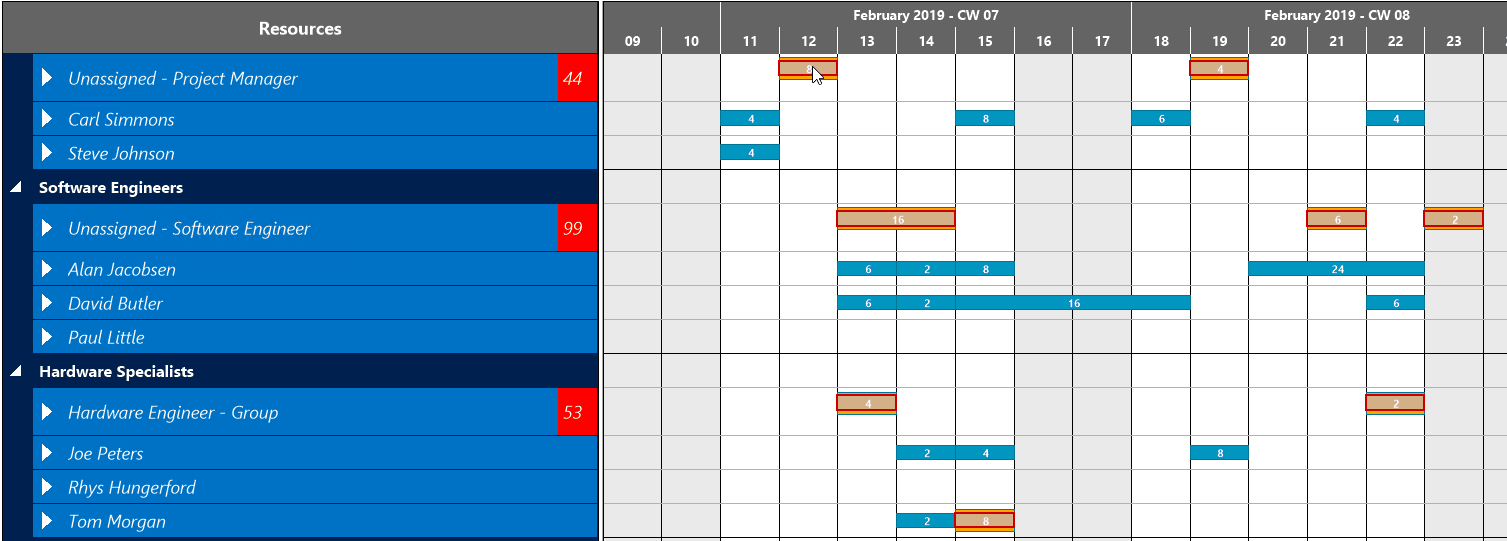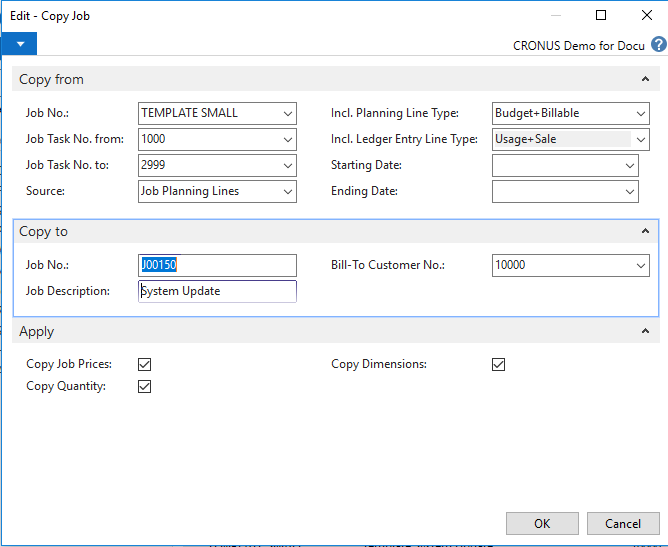As user or reseller of Microsoft Dynamics NAV you are well aware of the fact that working with the proven tool for (not only) simplifying the management of projects, tasks, and resources can sometimes be a bit cumbersome and time-consuming. You also know our Visual Jobs Scheduler (VJS) add-in and have already discovered some of its handy functions for reducing or even bypassing some of these behaviors in NAV.
With this blogpost I'd like to draw your attention to a simple technique that already exists in NAV and will, when used together with the VJS, make the planning much more agile:
See how to rapidly create new jobs by using templates and afterwards fine-tune the new jobs' timing and resource planning by drag and drop in the VJS:
Creating new jobs in NAV: a complex business
Imagine you have to create a big project with lots of tasks - normally, you'd have to create every tiny detail on the according NAV cards. This is not only very time-consuming but also prone to errors.
Design and specify a model job as template
So, if your jobs mainly have the same structure regarding tasks, resources and job planning lines, why not use one suitable job as model and copy it whenever a similar new job has to be added?
Meet two major requirements
Since the two major tasks to be handled when scheduling a project are time scheduling on the one hand and resource planning on the other hand, this model job should include
- A suitable overall time structure
- Type and quantity of the required resources. To keep your template as general as possible, you should assign the Job Planning Line to a resource group (only at the end of the process you will assign them to the final resource. See blogpost Rough and fine planning of resources).
Use the template for new jobs
We recommend to carefully plan your model job and give it a descriptive name - so as to quickly find it and not to confuse it with other jobs that are part of your actual schedule. From now on, whenever you have to add a new job, just copy your model job and rename it accordingly.
Fine tuning with the VJS
And as if by magic, we have created a new job that, of course, also appears in the VJS:

"But - !", I can already hear you object, "This project does not run at the same time as the original one and besides, what to do with the resource allocations?". Nothing is easier than that - because now the VJS comes into play.
Step 1: Fine-tune the time-scheduling in the Jobs View
In the VJS you now can easily do the fine-tuning. Start with the time-scheduling in the jobs view: Schedule the complete job in one go or only parts of it by simple drag & drop.

Step 2: Fine-tune the resource planning in the Resource View
After having done the time-scheduling, switch to the resource view (make sure to have marked the according job) and have a look at your resources:
- Check wether there is enough capacity on group level.
- When things seem to get tight, you might have to refine your time scheduling with regard to the resources.
- Everything ok? Then start refining your resource planning by dragging the Job Planning LInes from the groups to the accoding resources.

Benefits
Creating new jobs by using templates and fine-tuning the projects with a visual project planning add-in by mouse interaction afterwards brings considerable advantages for the planner. He can
- Save time
- Avoid typing errors
- Recognize the consequences of every move directly on the screen - including capacity overloads - and immediately intervene if neccessary
- Just discard the changes by not saving them if the results are not satisfactory
More information
- Watch a video about using templates in the VJS.
- Learn how to speed up project planning with the VJS by starting from a Dynamics NAV page.
- Read our ebook about Visual Scheduling for Microsoft Dynamics NAV:


